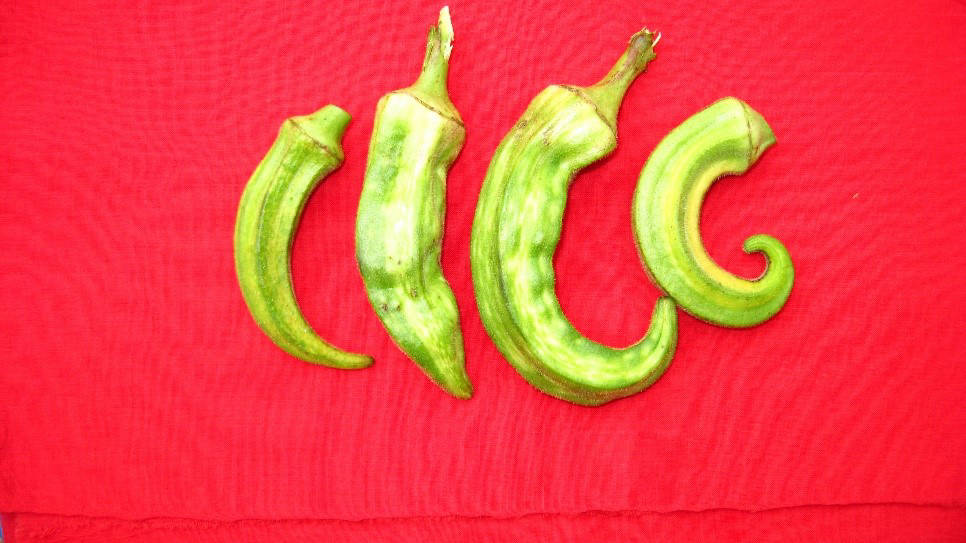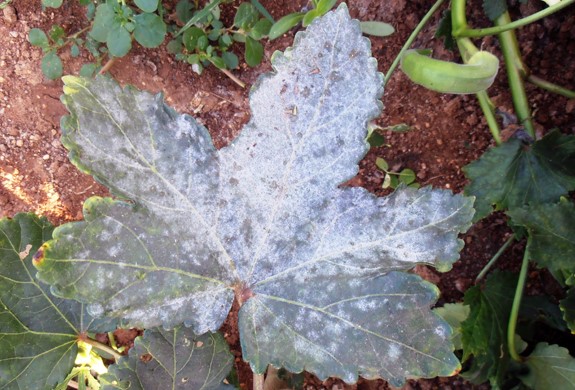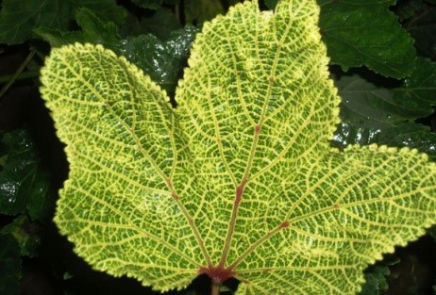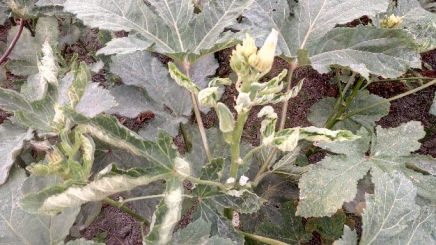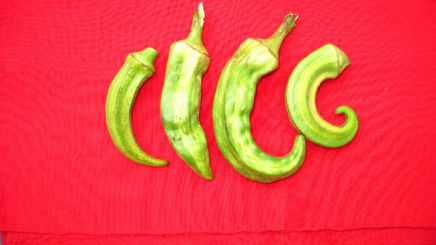OKRA FRUIT-DISTORTION MOSAIC DISEASE (Tobacco streak virus)
Symptoms: Chlorotic spots, chlorotic leaf blotches, distortion of
leaves, chlorotic streaking, distortion of fruits,
and severe yield losses. It produces bright-yellow patches interspersed with green areas on the leaves; at later stages, the yellow patches increase in size and leaf deformation occurs. The fruits are highly distorted and unmarketable. Yield losses due to this virus vary from 15 to 76 per cent, depending upon the stage of infection.
The disease is caused by a virus that is transmitted through pollen and by thrips. Many crops (such as soybean, sunflower, marigold) and weeds (such as Xanthium and parthenium) act as reservoir-hosts of this virus.
Management:
1. Eradication of early-infected plants and weed¬hosts from the field.
2. Border cropping with maize, jowar, or bajra, with insecticide sprays give a reduction in incidence of the disease.
3. Soil-application of Furadon @ 1.5 Kg ai/ha atthe time of sowing.
4. Foliar Spray of Acephate (0.15 %), followed by spray of Imadacloprid (0.03 %) or Monocrotophos (0.05%) or Metasystox (0.05%) or Dimethoate (0.05%), is effective.
5. Chemical spray, followed by neem seed kernel extract (2%) is also effective, in rotation with insecticides.





